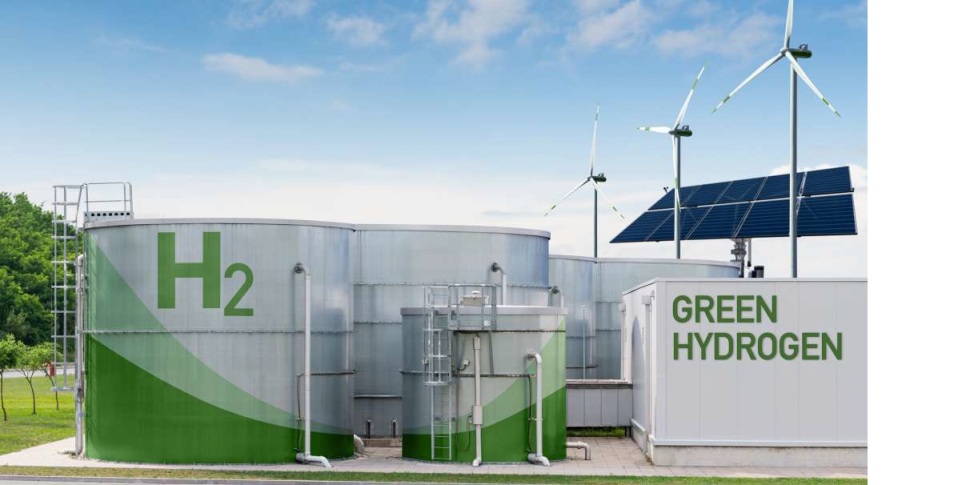Two major interstate transmission system (ISTS) schemes for feeding upcoming green hydrogen and green ammonia capacity in Gujarat, are under deliberation.
The National Committee on Transmission (NCT), in its ensuing meeting, is expected to discuss two power transmission schemes that aim to feed renewable energy to upcoming green hydrogen/ammonia plants in the Kandla and Mundra areas of Gujarat.
These schemes have already been discussed by the Western Region Power Committee (WRPC) in April this year, and will now be deliberated upon by NCT.
These two ISTS schemes will collectively facilitate transfer of nearly 12 GW of green energy, and are estimated to cost around Rs.9,200 crore. They will be primarily addressing the energy requirement of green hydrogen/ammonia capacity that will come on stream during FY27 and FY28, to start with.
For Kandla, there is one scheme planned while for Mundra, the overall scheme has been broken down into two components.
Kandla
In FY27 and FY28, the electricity demand from green hydrogen plants in the Kandla region, which are being put up by developers like Greenko Group, Renew Power, Welspun Group and Ocior Energy, is expected to be 2.465 GW.
This 2.465-GW energy requirement at Kandla will be addressed by one scheme, expected to cost around Rs.2,775 crore.
This scheme envisages the development of a new 3×1500 MVA, 765/400kV GIS substation at Kandla, along with several other supporting elements.
Mundra
During the same time period, FY27 and FY28, Adani New Industries Ltd will need 11 GW of additional energy for its upcoming green hydrogen and ammonia capacity in Mundra. It may be noted that the new 4×1500 MVA, 765/400kV Navinal GIS substation, which is coming up through an independent ISTS-TBCB scheme housed under “Navinal Power Transmission Ltd” will be equipped to cater to drawl requirement of 3 GW from bulk consumers and 1.5 GW for green hydrogen/ammonia projects. This leaves 9.5 GW that needs to be addressed.

For Mundra, the transmission scheme will be divided into two parts – technically called Part B1 (6 GW) and Part B2 (3.5 GW). These two components are estimated to cost Rs.3,593 crore and Rs.2,886 crore, respectively.
Part B1 will be addressed by augmentation of the upcoming 765/400kV Navinal GIS substation by 5×1500 MVA, while Part B2 will involve setting up of a new 4×1500 MVA, 765/400kV Navinal-II GIS substation.
Thus, the 11 GW requirement at Mundra will be catered to by three substations – Navinal (1.5 GW), Navinal-augmented (3.5 GW) and Navinal-II (6 GW).
Implementation period
All these schemes are envisaged to have a completion timeframe of 24 months. However, they will be developed concurrently so as to ensure their completion by the time the benefiting green hydrogen/ammonia capacities get commissioned.
Mode of implementation
NCT will also decide on the mode of implementation, whether TBCB or RTM (regulated tariff mechanism), for each of the three schemes. However, it appears likely that the TBCB option will be proposed as the projects do not appear “extraordinary” in terms of compressed completion schedules, or use of sophisticated technology. All the same, as each of the schemes has an envisaged capital outlay of over Rs.500 crore, final approval will be needed from the Union power ministry.
More transmission infrastructure
While the aforementioned schemes seek to address energy requirement of nearly 12 GW by green hydrogen/ammonia projects in Kandla and Mundra during FY27 and FY28, more infrastructure will be needed for the years ahead. It is estimated that energy requirement will grow by another 22 GW in FY29 and FY30, considering upcoming green hydrogen/ammonia capacities in Kandla and Mundra alone.
A growing volume of RE transmission infrastructure for green hydrogen/ammonia projects will be required in the coming years, in keeping with India’s proposed transition from fossil fuel and fossil fuel-based feedstock to green hydrogen/green ammonia, both as energy carriers, and chemical feedstock for different industries. Under the National Green Hydrogen Mission, approved by the Union Cabinet on January 4, 2022, India envisions the creation of at least 5 million tonnes per year of green hydrogen production capacity, with associated renewable energy capacity addition of around 125 GW.
Also read: ISTS schemes worth over Rs.22,000 crore recommended for clearance
Featured photograph is for representation only



